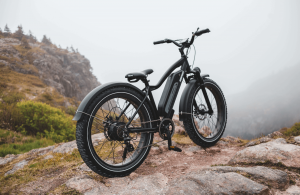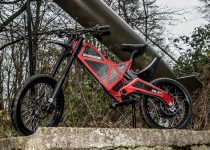An electric bike’s price can range from $600 to more than $5000, depending on the features and quality of the bike. E-bikes come with a wide range of electronic and motorized components that make them more expensive than traditional bikes. Understanding these different components can provide clarity on the different price points of electric bikes.
The most expensive part of an e-bike is its power system; battery packs, motors, and controllers all go into making these high-end electric bikes. Each of these components varies in price due to power output, size, and strength. Let’s take a closer look at each of these components to better understand the pricing of electric bikes.
Cost of E-bike Batteries
 Depending on the size and power output, e-bike batteries can cost anywhere from $400 to $900 plus. Electric bike batteries have an average lifespan of 2 to 5 years with regular charging and depletion. There are multiple brands of e-bike batteries including Samsung, LG, Panasonic, and Sanyo. There are also lesser-known brands on the market but as with any electronic device, you get what you pay for.
Depending on the size and power output, e-bike batteries can cost anywhere from $400 to $900 plus. Electric bike batteries have an average lifespan of 2 to 5 years with regular charging and depletion. There are multiple brands of e-bike batteries including Samsung, LG, Panasonic, and Sanyo. There are also lesser-known brands on the market but as with any electronic device, you get what you pay for.
E-bike batteries come in two types: lead-acid or lithium-ion packs. Lead-acid batteries are more affordable, but they have less power output and take longer to charge than lithium-ion e-bike battery packs. Also, a lead-acid battery’s lifespan is shorter because exposure to extreme heat and cold can deplete the charge quicker.
Lithium-ion electric bike batteries have a longer lifespan, greater power output, and faster charging. The only downside to lithium-ion e-bike batteries is that they have the potential to overheat if overcharged, so it is important to have a good battery charger that will cut off the power when the battery reaches 100 percent.
E-bikes that have more powerful motors need higher capacity batteries which are usually heavier and more expensive than standard e-bike battery packs. The average electric bike can travel between 20 to 40 miles per charge depending on the weight of the rider and how much cargo they carry.
Cost of E-bike Motors
Electric motors play an important role in determining the overall cost of an e-bike. The larger the motor the more power you will have to ride up steep hills and reach higher top speeds.
The cost of e-bike motors can vary greatly, depending on variables like power, battery
system, frame size, and weight of the rider. E-bike motors come in all shapes and sizes with different prices associated with them. E-bike motors can be as cheap as $50 or up to several hundred dollars, depending on the type and power output you need for your riding style.
Other E-bike Costs
E-bikes can be expensive because they require more specialized parts than traditional
bicycles. E-bikes are also heavier because they need larger batteries. Extra costs for electric bikes may include throttle, motor controller, wiring, and waterproofing components.
Most e-bike components need waterproofing to keep them safe from the elements. An e-bike that is waterproof will not short out or become damaged when it gets wet from rain, snow, and puddles. Protective covers, wiring harnesses, and cases are available to protect the key components of the bike.
E-bike throttles are optional, but they are a great way to control your speed. E-bikes can go as fast or slow as the rider wants them to, so it is important for e-bikes to have several speeds and options available while riding. E-bike throttles allow you to choose how much pedal assistance you want while biking by controlling the level of electric throttle power sent to the motor. E-bike throttles are usually easy to install, but they can be costly depending on your model and brand choice.
E-bike motor controllers are another e-bike expense to consider. E-bikes can have as few or as many speeds and options for throttle power, but they all need a motor controller of some kind. E-bike controllers are easy to install and only need one wire hookup with the battery pack.
Electric bikes can have wiring harnesses that are regularly installed or wired from each component directly into a central hub. Ebiking options such as regenerative braking require more complicated wiring and customizing of components.
The digital display may need a special case to protect from rain and debris. E-bike digital displays are like car dashboards and include information about speed, distance traveled, and battery life remaining. E-bikes may have different accessories such as GPS tracking systems or electric locks that need waterproofing and protection too.
To sum it up, e-bikes are more expensive than traditional bikes because they have more expensive components like motors, batteries and control systems. E-bikes also have higher running costs because of battery replacement, motor maintenance and charging.
E-bikes can be expensive, but they are an investment in transportation, health, and the environment. Understanding the different component options available can help save you some money on your purchase.



